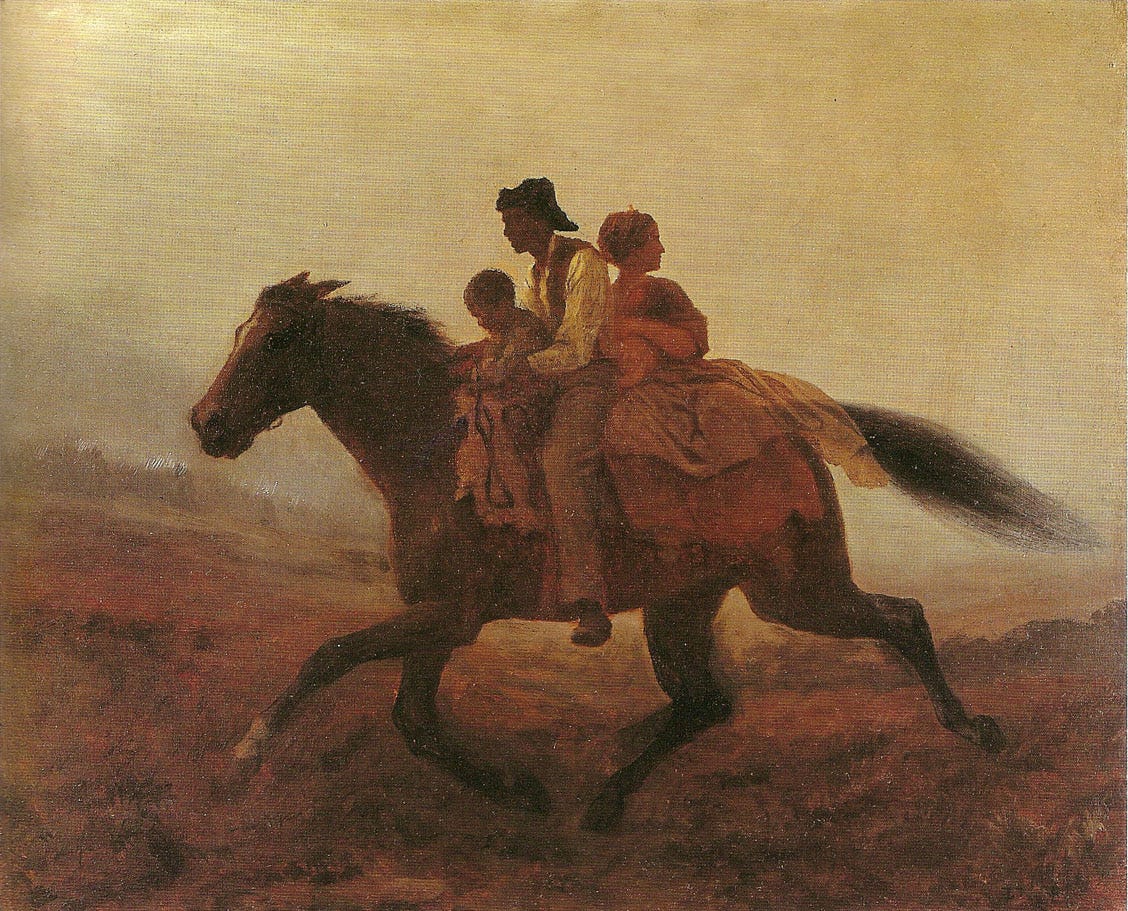Call for Proposals: Escaping to Destinations South: The Underground Railroad, Cultural Identity, and Freedom Along the Southern Borderlands
National Park Service
Network to Freedom
2012-06-20 through 2012-06-24
St. Augustine, Florida

Call for proposal deadline is Sunday, 2012-01-15, 23:59 PST (Local Time).
The 2012 Conference theme is the resistance to slavery through escape and flight to and from the South, including through international flight, from the 16th century to the end of the Civil War. Traditional views of the Underground Railroad focus on Northern destinations of freedom seekers, with symbols such as the North Star, Canada, and the Ohio River (the River Jordan) constructed as the primary beacons of freedom. This conception reduces the complexity of the Underground Railroad by ignoring the many freedom seekers that sought to obtain their freedom in southern destinations.
Likewise, borders and the movement across them by southern freedom seekers are also very crucial to our understanding of the complexities of the Underground Railroad. Freedom seekers often sought out political and geographical borderlands, as crossing these locations usually represented the divide between slavery and freedom. To this end, the conference will explore how southern freedom seekers seized opportunities to escape slavery into Spanish Florida and the Seminole Nation, to the Caribbean Islands, and into the western borderlands of Indian Territory, Texas, and Mexico.
Call for Proposals:
The 2012 National Underground Railroad Conference seeks to create a cultural, historical, and interpretive exchange between domestic and international descendent communities of southern freedom seekers.
The 2012 National Underground Railroad Conference seeks a program that includes the full diversity of academic and grassroots research, documentation, and interpretation of the Underground Railroad. Whenever possible, proposals should consist of presenters of both sexes, all age groups, and members of racial and ethnic minorities. We welcome scholars who practice their craft in a variety of venues, including: independent researchers and educators; community organizations; archeological investigations; museums; archives and libraries; historical societies; living history and reenactment groups; academic institutions at all levels; and the National Park Service.
The Program Committee is keen to encourage a wide variety of forms of conversation. Please feel free to submit such nontraditional proposals as poster sessions; roundtables that home in on significant topics in Underground Railroad history; discussions around a single historical person, image, or archeological/historic site in Underground Railroad history; a series of sessions organized around a single thread that will run through the conference; working groups that tackle a common issue or challenge; workshops that develop professional skills in the documentation or education of Underground Railroad history; or multimedia representations, documentaries, and performances whose central topic is Underground Railroad history. Teaching sessions are also welcome, particularly those involving the audience as active participants or those that reflect collaborative partnerships and/or conversations among students, teachers, public historians, research scholars, and educators at all levels and in varied settings.
We prefer to receive proposals for complete sessions, but will consider individual papers and performances as well.
Proposals of specific interest
- Dispersal of Gullah Geechee culture through the migration of freedom seekers;
- Military and political defense of freedom in Spanish Florida;
- The War of 1812 and its Impact on southern Freedom seekers;
- Black Seminole maroons and the Seminole Indian Wars;
- Freedom seekers along the Trail of Tears and in Indian Territory;
- The Underground Railroad between the United States and the Caribbean;
- Black Indian Freedom Seekers along the U.S.- Mexican Borderlands;
- Creation of southern maroon communities;
- Freedom seekers in the South’s maritime system;
- Cultural representations of southern Underground Railroad history (i.e. music, living history, exhibits, performance, documentaries);
- Strategies to preserve and interpret Underground Railroad and Freedom seeker stories
- Strategies to teach local Underground Railroad history to children
Other topics of interest include stories of southern freedom seekers during the War of 1812 and the American Civil War in commemoration of the 200th and 150th anniversaries, respectively, as well as the American Revolutionary War. The conference will also commemorate the 450th anniversary of the City of St. Augustine’s founding and the important role of Africans to this history.
Submission Procedures
Proposals should be submitted on the attached form by email (2012NationalUGRRConference@oah.org) to the Organization of American Historians, beginning October 2011. Complete panel proposals should include no more than 3 presenters, and a chair/moderator or commentator. Commentators may be omitted in order for the audience to serve in that role. Each participant will receive 20 minutes for his or her presentation. Session membership should be limited by the need to include substantial time for audience questions and comments. Individual submissions that are accepted will be placed on a panel by the Program Committee.
All proposals must include the following information:
- a complete mailing address, e-mail address, phone number, and affiliation for each participant;
- an summary of no more than 500 words, required only for panel proposals;
- a description of no more than 250 words for each presentation; and
- bio/vita of no more than 250 words for each participant.
Submission Deadline
The deadline for proposals is Sunday, January 15, 2012, by 11:59 pm PST.
For more information, click here.

